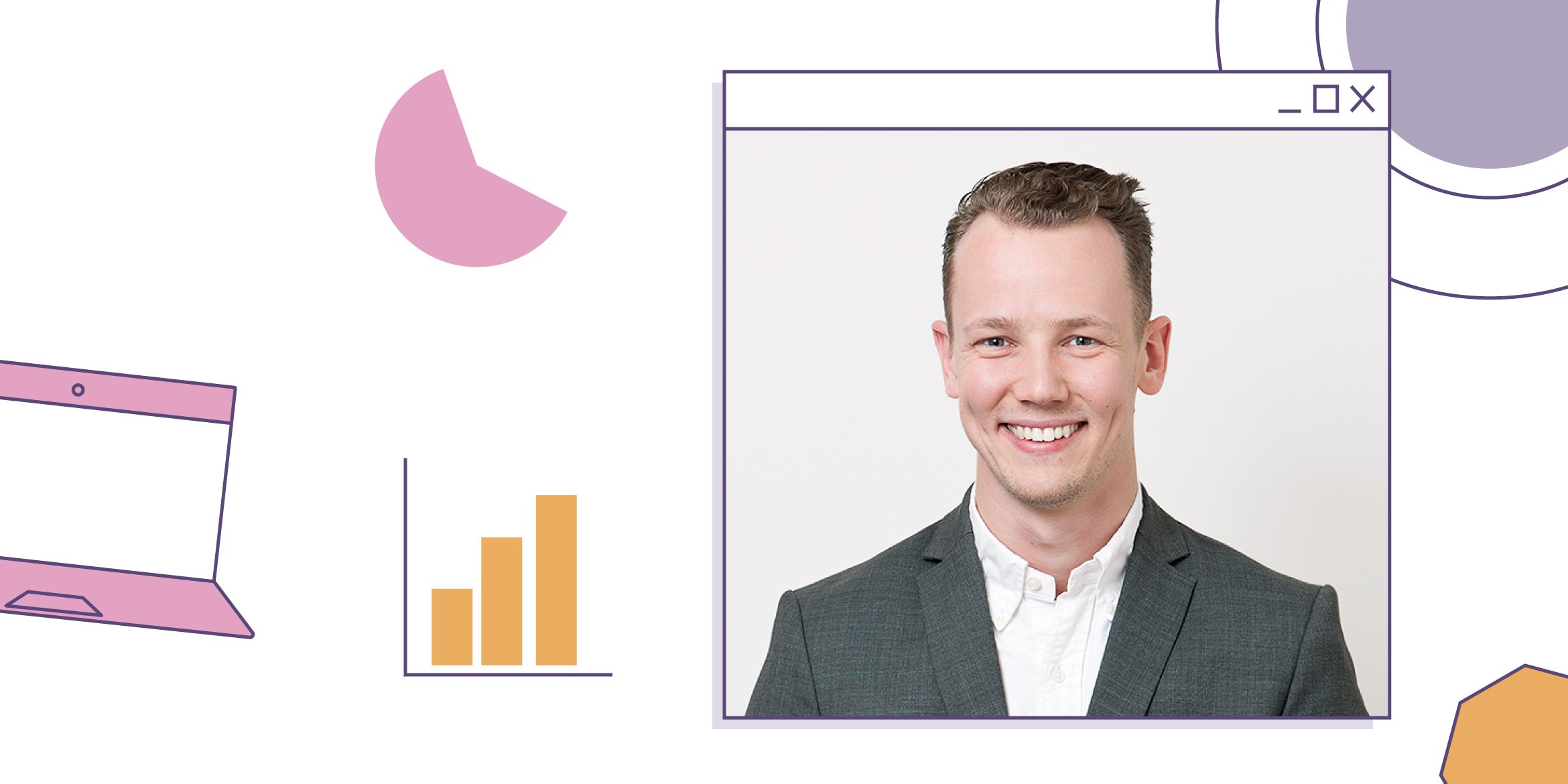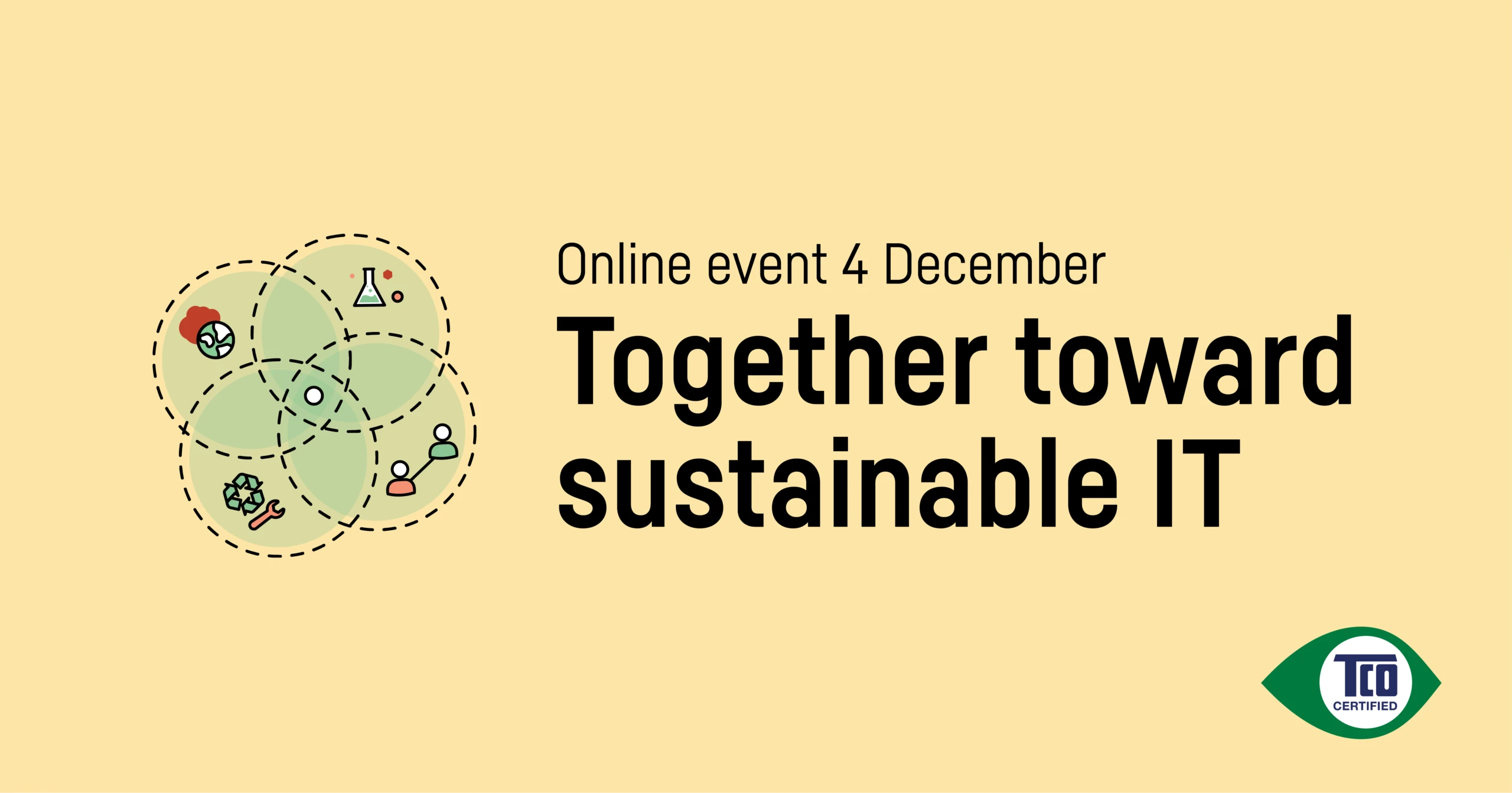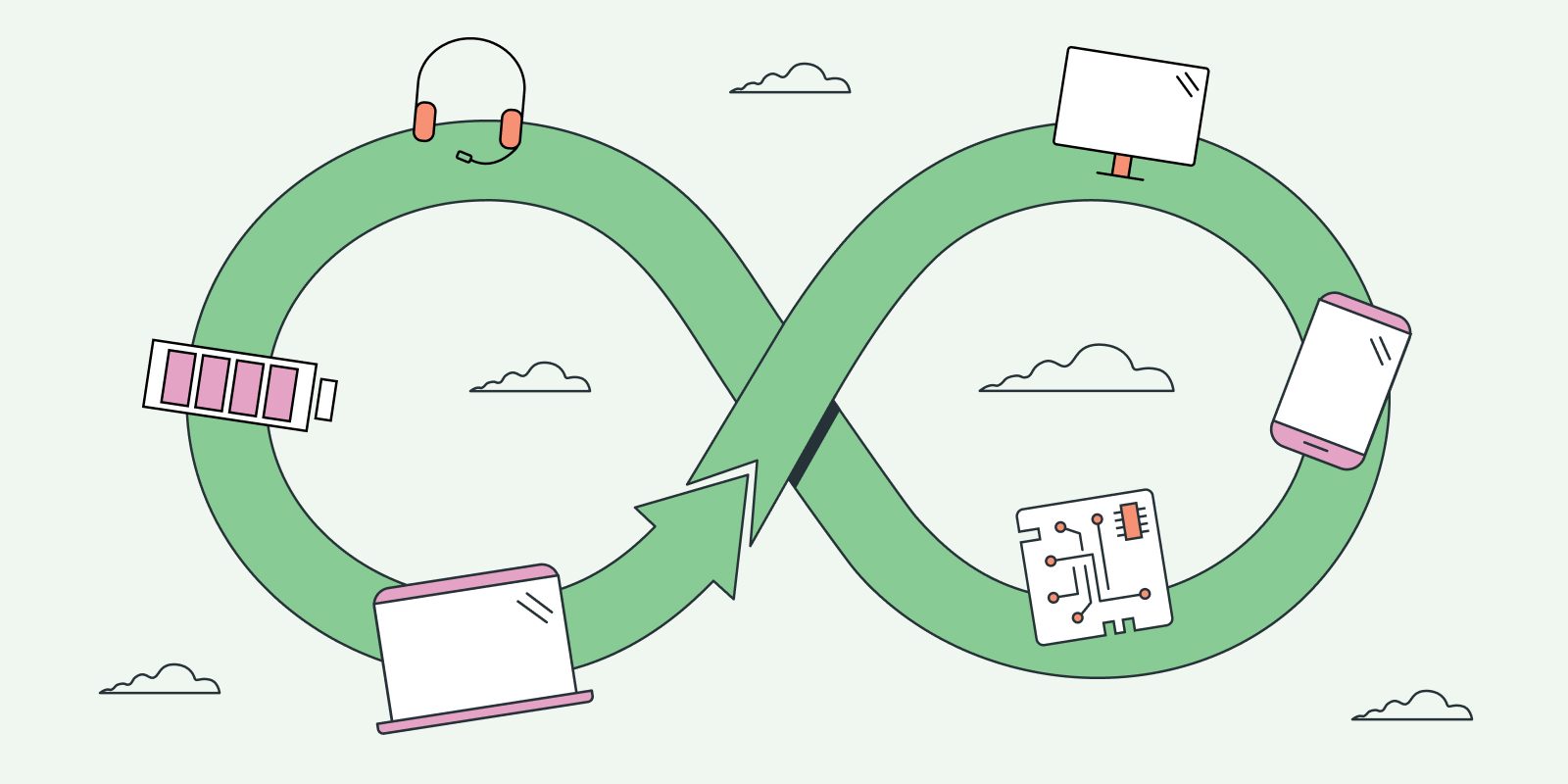During our recent event, Circular IT management in a linear world, Andreas Nobell, Development Manager, at TCO Development presented findings from our study: How to manage notebooks in a circular way. He got lots of questions and only had time to answer a few. In this article, he addresses the rest.
What do the TCO Certified criteria cover today?
The certification includes criteria with a circular approach and covers the whole lifecycle of a product, all the way from material sourcing and manufacturing, through the use phase and to the recovery phase/end of life. Compliance with all criteria is verified by independent verification organizations that specialize in IT products, social responsibility, or other sustainability issues.
How will TCO Certified be developed going forward in terms of re-use, repair, and resell?
We’re currently working on the first draft of criteria for TCO Certified, generation 9. In this generation, the focus on circularity will be even stronger, and criteria will support the re-use, repair, and resell of products in new and better ways. Some ideas we’re working on are product specific, such as encouraging the industry to use better quality batteries in their products or making more durable products that can have a longer service life. Other ideas have more of a systems perspective.
Many organizations are shifting from desktop computers to notebooks. Can notebooks have the same life length as desktops?
We believe that for the vast majority of users, they can. However, they need to be handled correctly and be designed and made for professional use, be durable, and possible to upgrade and repair.
How does TCO Certified work to prolong product life in terms of software?
With TCO Certified, generation 8, which is the current generation, we included our first criterion on software that aims to help extend the lifetime of products. This criterion states that certified products, that can store data, must come with software that allows for secure data removal, free of charge. This software must either be pre-installed or available on the manufacturer’s website. For TCO Certified, generation 9 we plan to implement more software-oriented criteria that will help extend product life.
When leasing devices, isn’t it tempting to replace products more frequently which does not support a circular behavior?
It depends on your intentions, and how the leasing contract is designed. If the IT brand stays in ownership of the product, it has an economic incentive to design and produce products that live longer, and that can be upgraded and repaired. Whether you buy or lease IT products, keeping them longer is the most important thing you can do to save natural resources and reduce greenhouse gas emissions.
How can manufacturers work with e-waste and waste compensation to make material use more circular?
We have a new TCO Certified Edge criterion called E-waste Compensated. TCO Certified Edge is a supplemental certification to TCO Certified, intended for best-in-class products that meet leading edge sustainability criteria. When you buy an IT product certified according to the TCO Certified Edge criterion, E-waste Compensated, an equivalent amount of e-waste is collected in a country that lacks safe recycling systems. The environment is protected from hazardous substances and, due to social requirements, fair job opportunities are created locally. The collected e-waste is then transported to a recycling plant compliant with strict environmental criteria.
Would it make sense to optimize lifetime on the material level rather than the product level, from an environmental perspective?
Given existing knowledge, no. It doesn’t make sense to optimize from a material level since so much energy goes into the refinery process when a product is built. Therefore, it is almost always better from an environmental perspective to focus on extending the lifespan of a product. Second, to this, the focus should be on finding new ways that the products can be used. Then, as a last resort, products should be recycled and materials recovered. That said, things might change if we see a shift in which types of materials are being used in the products compared to today.
What is your most important advice for manufacturers to drive circular IT?
To support the right to repair movement by designing products that can be repaired and upgraded!
What are your three most important tips that will help users extend the life of their IT products?
- Check if you can find a refurbished product that meets your needs and buy that one instead of a new product.
- If you need to buy new, make sure that you take your future needs into account when choosing the performance of the product, so you do not end up with an outdated product after just three years, forcing you to buy new again.
- Make sure you sell or give away your products when you are finished using them, so they can have a second life. Currently, refurbishers have a hard time finding enough used products they can re-sell.
What to learn more?
Our report, Impacts and Insights: Circular IT Management in Practice investigates how circularity can be implemented on the ground when you procure and use IT products. You can also check out the on-demand version of our event, Circular IT management in a linear world.




